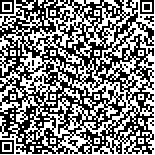| 引用本文: |
刘笑蓉,李硕夫,梅文亚,湛欢,刘平安,周日宝.羊踯躅含药血清对TNF-α诱导的类风湿关节炎成纤维样滑膜细胞增殖及炎症因子分泌的影响[J].湖南中医药大学学报,2023,43(10):1809-1814[点击复制] |
|
| |
|
|
| 本文已被:浏览 2026次 下载 1154次 |
| 羊踯躅含药血清对TNF-α诱导的类风湿关节炎成纤维样滑膜细胞增殖及炎症因子分泌的影响 |
| 刘笑蓉,李硕夫,梅文亚,湛欢,刘平安,周日宝 |
| (湖南中医药大学, 湖南 长沙 410208;湖南中医药大学第一附属医院, 湖南 长沙 410007;湖南省中医药研究院, 湖南 长沙 410006) |
| 摘要: |
| 目的 探究羊踯躅含药血清对肿瘤坏死因子-α(tumor necrosis factor-α, TNF-α)诱导的类风湿关节炎成纤维样滑膜细胞(rheumatoid arthritis fibroblast-like synoviocytes, RA-FLS)增殖和炎症因子分泌的影响和作用机制,为临床治疗RA提供理论及实验依据。方法 将细胞分为空白组、模型组、雷公藤多苷组、5%和10%空白血清组及5%和10%羊踯躅含药血清组。RA-FLS经TNF-α(10 ng/mL)处理24 h以构建RA细胞模型。CCK-8检测细胞增殖情况。采用ELISA检测炎症因子白细胞介素-1β(interleukin-1 beta, IL-1β)、白细胞介素-17A(interleukin-17A, IL-17A)、白细胞介素-6(interleukin-6, IL-6)、白细胞介素-2(interleukin-2, IL-2)和γ干扰素(interferon-γ, IFN-γ)的含量。Western blot检测蛋白激酶B(protein kinase B, AKT1)、磷酸化AKT1(phosphorylated AKT1, p-AKT1)、原癌基因c-JUN、p-c-JUN、p65、p-p65、表皮生长因子受体(epidermal growth factor receptor, EGFR)蛋白表达水平。结果 与未用羊踯躅含药血清处理的正常RA-FLS相比,用5%和10%羊踯躅含药血清处理的细胞增殖活性在48 h内没有明显的变化(P>0.05),而用20%和30%羊踯躅含药血清处理的细胞增殖活性明显降低(P<0.05)。与空白组相比,模型组的细胞增殖活性显著上升(P<0.05);与5%和10%空白血清组相比,5%和10%羊踯躅含药血清组的细胞增殖活性均显著降低(P<0.05)。与空白组相比,模型组的IL-1β、IL-17A、IL-6、IL-2和IFN-γ水平均明显升高(P<0.05);与5%和10%空白血清组相比,5%和10%羊踯躅含药血清组的IL-1β、IL-17A、IL-6、IL-2和IFN-γ水平明显下降(P<0.05)。与空白组相比,模型组的EGFR表达量以及AKT1、c-JUN和p65的磷酸化水平均明显升高(P<0.05);与5%和10%空白血清组相比,5%和10%羊踯躅含药血清组的EGFR表达量以及AKT1、c-JUN和p65的磷酸化水平显著降低(P<0.05)。此外,10%羊踯躅含药血清的效果比5%羊踯躅含药血清更为显著(P<0.05)。结论 羊踯躅含药血清能抑制TNF-α诱导的RA-FLS增殖及促炎因子的分泌,其机制可能与调控EGFR、核因子-κB(nuclear factor-κB, NF-κB)、AKT和c-Jun N末端激酶(c-Jun N-terminal kinase, JNK)通路有关。 |
| 关键词: 类风湿关节炎 成纤维样滑膜细胞 羊踯躅含药血清 细胞增殖 炎症因子 |
| DOI:10.3969/j.issn.1674-070X.2023.10.009 |
| 投稿时间:2023-02-02 |
| 基金项目:湖南省自然科学基金项目(2022JJ80086);湖南省卫健委科学研究项目(D202302078705);湖南省教育厅科学研究项目(19C1384);湖南省大学生创新创业训练计划项目(2022-5313);湖南省中医药管理局科研计划项目(2021161);湖南中医药大学中药学一级学科开放基金项目(2020ZYX01);湖南中医药大学青苗计划(校行人字〔2017〕25);湖南省一流学科中药学(校行科字〔2018〕3);2020年湖南省一流本科专业建设点(湘教通〔2020〕248号):中药资源与开发 2020年国家级一流本科专业建设点(教高厅函〔2021〕7 号):中药学专业。 |
|
| Effects of medicated serum containing Rhododendron molle G. Don on the proliferation and inflammatory factors secretion of fibroblast-like synoviocytes in rheumatoid arthritis induced by tumor necrosis factor |
| LIU Xiaorong,LI Shuofu,MEI Wenya,ZHAN Huan,LIU Ping'an,ZHOU Ribao |
| (Hunan University of Chinese Medicine, Changsha, Hunan 410208, China;The First Hospital of Hunan University of Chinese Medicine, Changsha, Hunan 410007, China;Hunan Academy of Chinese Medicine, Changsha, Hunan 410006, China) |
| Abstract: |
| Objective To explore the effects and mechanism of action of medicated serum containing Rhododendron molle G. Don on the proliferation and inflammatory factors secretion of tumor necrosis factor-α (TNF-α)-induced rheumatoid arthritis fibroblast-like synoviocytes (RA-FLS), so as to provide theoretical and experimental basis for clinical treatment of RA. Methods RA-FLS cells were divided into blank group, model group, tripterygium glycosides group, blank serum (5%, 10%) groups, and medicated serum (5%, 10%) groups. RA-FLS were treated with TNF-α (10 ng/mL) for 24 h to construct RA cell models. Cell Counting Kit-8 (CCK-8) was utilized to examine cell proliferation. Enzyme-linked immunosorbent assay (ELISA) was used to determine the content of inflammatory factors including interleukin-1 beta (IL-1β), interleukin-17A (IL-17A), interleukin-6 (IL-6), interleukin-2 (IL-2), and interferon-gamma (IFN-γ). Western blot was used to determine the protein expression levels of protein kinase B (AKT1), phosphorylated AKT1 (p-AKT1), c-JUN, p-c-JUN, p65, p-p65, and epidermal growth factor receptor (EGFR). Results Compared with the groups without medicated serum containing Rhododendron molle G. Don, there was no significant change in cell proliferation activity within 48 h in the 5% and 10% medicated serum containing Rhododendron molle G. Don groups (P>0.05), but cell proliferation activity significantly reduced in the 20% and 30% medicated serum containing Rhododendron molle G. Don groups (P<0.05). Compared with the blank group, cell proliferation activity in the model group was significantly higher (P<0.05). Compared with the 5% and 10% blank serum groups, cell proliferation activity in the medicated serum groups containing different doses of Rhododendron molle G. Don was significantly lower (P<0.05). Compared with the blank group, the levels of IL-1β, IL-17A, IL-6, IL-2, and IFN-γ in the model group were significantly higher (P<0.05). Compared with the blank serum groups, the levels of IL-1β, IL-17A, IL-6, IL-2, and IFN-γ in the serum groups containing different doses of Rhododendron molle G. Don were significantly lower (P<0.05). Compared with the 5% and 10% blank group, the expression level of EGFR as well as the phosphorylation levels of AKT1, c-JUN, and p65 in the model group were significantly higher (P<0.05). Compared with the blank serum groups, the expression levels of EGFR as well as the phosphorylation levels of AKT1, c-JUN, and p65 in the medicated serum groups containing different doses of Rhododendron molle G. Don were significantly lower (P<0.05). Additionally, the effects of the 10% serum containing Rhododendron molle G. Don were more significant than those of the 5% medicated serum containing Rhododendron molle G. Don (P<0.05). Conclusion The medicated serum containing Rhododendron molle G. Don can inhibit cell proliferation and the secretion of pro-inflammatory factors of RA-FLS induced by TNF-α, which may be related to the regulation of EGFR, nuclear factor κB (NF-κB), AKT, and c-JUN N-terminal kinase (JNK) pathways. |
| Key words: rheumatoid arthritis fibroblast-like synoviocyte medicated serum containing Rhododendron molle G. Don cell proliferation inflammatory factor |
|

二维码(扫一下试试看!) |
|
|
|
|




